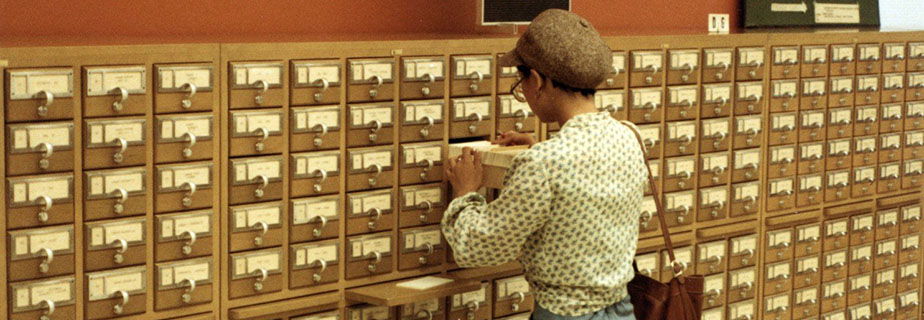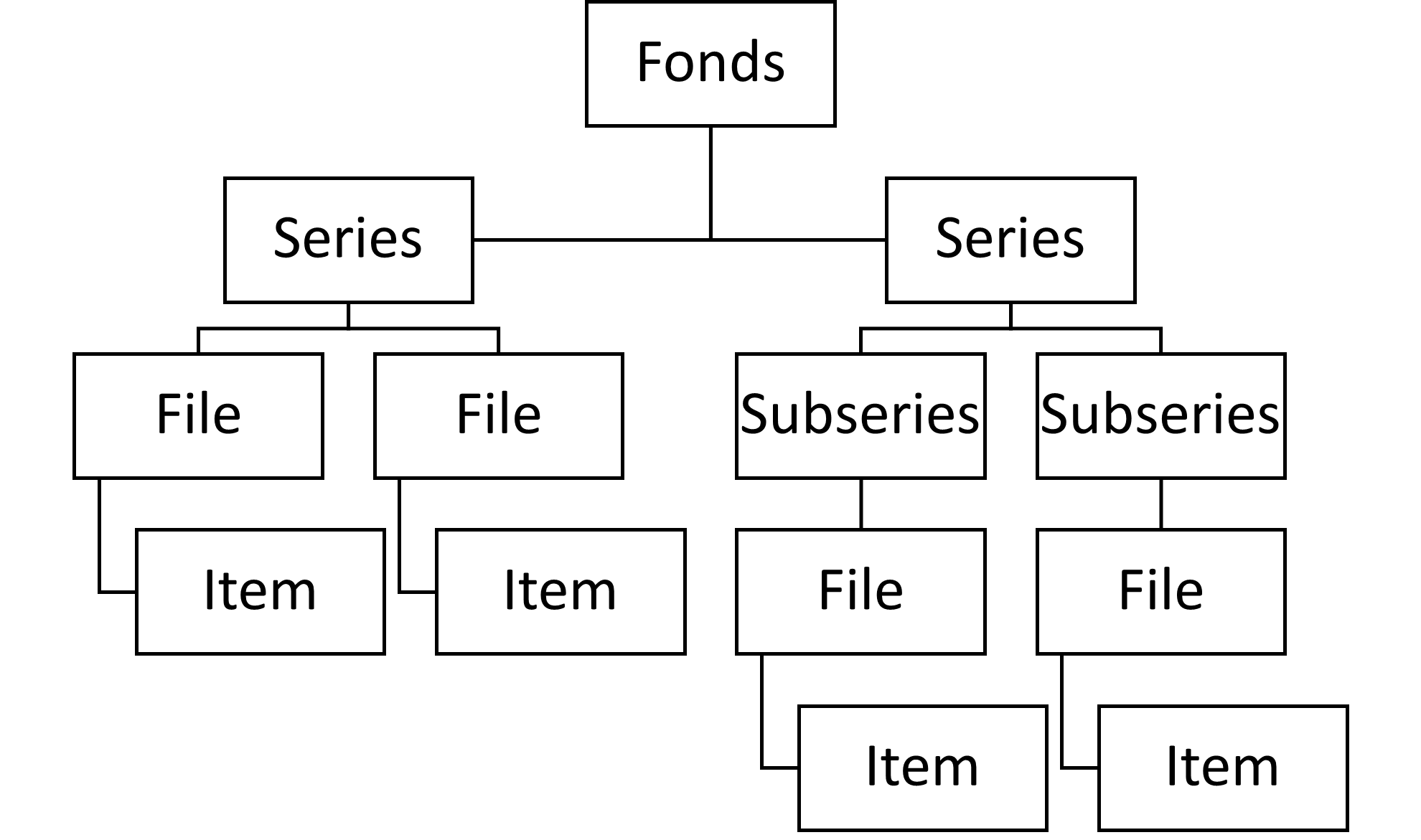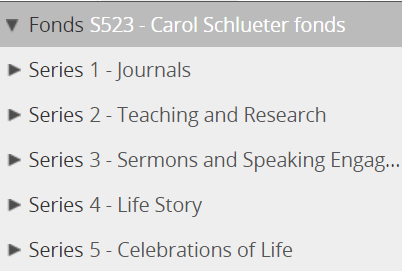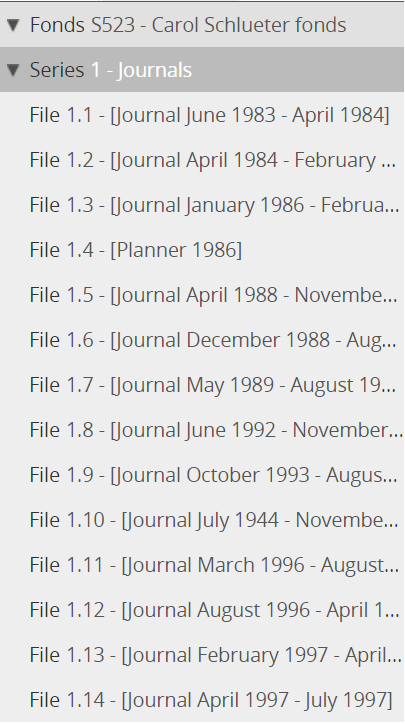Archives 101

Introduction to Archives and Archival Research
What are Archives?
It can be difficult to define the word ‘archives’ as it has different meanings in different contexts. For our purposes, the word archives refers to:
- Documentary materials created, received, and used by an individual, family, or organization throughout their activities and preserved because of the materials’ enduring value.
- Organizations or repositories that acquire, preserve, and provide access to these materials.
Differences Between Archives and Libraries
Archives:
- Closed stacks and non-circulating collection.
- Acquire primary sources directly from creator or collector.
- Organize records by provenance and original order.
- Describe records in a finding aid.
- Unique materials.
- Special handling instructions.
Libraries:
- Open stacks and circulating collection.
- Purchase primary and secondary sources from vendors.
- Organize material by classification schemes.
- Describe material in the library catalogue.
- Copies of material.
- Often no special handling instructions.
Types of Archives
There are several types of archives:
- University and college archives
- Corporate archives
- Government archives
- Religious archives
- Community archives
- Historical societies
- And more!
Types of Sources
Primary sources: material that contains firsthand accounts of events and that was created contemporaneous to those events or later recalled by an eyewitness (Society of American Archivists Glossary). Examples: textual records, photographs, audiovisual records, data sets, post on social media, etc.
Secondary sources: a work that is not based on direct observation of or evidence directly associated with the subject, but instead relies on sources of information (Society of American Archivists Glossary). Examples: textbooks, journal articles, biographies, etc.
How Archives are Organized
Archives are organized into fonds or collections. A fonds is the entire body of records of an individual, family, or organization that have been created and accumulated during their activities. A collection is a group of records that is intentionally assembled based on subject, geography, format, or another common characteristic.
Fonds and collections are arranged in a hierarchical structure. The hierarchy consists of series, sub-series, files, and items. The image below is an example of this structure.

Archival Terminology
Archives use terminology that may be unfamiliar to you. The following are commonly used terms:
Collection – a group of records that is intentionally assembled based on subject, geography, format, or another common characteristic.
Fonds – the entire body of records of an individual, family, or organization that have been created and accumulated during their activities.
Series – a group of similar records that are related as the result of being created or used in the same activity, such as correspondence or financial records.
File – a group of related documents housed in a folder.
Item – a single item.
Finding aid – a tool to help researchers discover and access archival records. It contains description of the archival material, where it is located, and contextual information to facilitate interpretation of the material.
Please visit the Dictionary of Archives Terminology for more definitions of terms.
Finding Archival Records
Identifying Potential Sources
These guiding questions might help you identify potential sources:
What is your research question?
What advocacy activities did grassroot environmental groups participate in in Northern Canada?
What information would support this research question?
Documents created by grassroot environmental groups.
What material or documents would contain this information?
Meeting minutes, newsletters, and press releases.
Who would create this material?
Canadian Artic Resource Committee.
What archives or organization has these materials?
Laurier Archives and Special Collections has the Canadian Artic Resource Committee fonds.
Where to Search for Archival Records
These are a few suggestions to get you starting searching for archival records:
- Laurier Archives and Special Collections
- Library and Archives Canada
- Archives of Ontario
- Archieon (Archives across Ontario)
- National Centre for Truth and Reconciliation Archives
- Archives Canada (Over 800 archives across Canada)
- ArchivesGrid (Over 7 million international archival descriptions)
- Bibliographies and works cited of secondary sources.
Search Terms
The titles of fonds, series, files, and items may come directly from the creator of the material or the items themselves and reflect the language of the material.
You want to consider a wide variety of search terms depending on the timeframe of your research project. For example, if I am interested in studying movies produced in Hollywood in the later 19th and early 20th centuries, a search for “movies” would return few results prior to the 1910s, when the word movie was first reportedly used. Material may be found with search terms such as “motion picture”, “moving picture”, “silent films”, or “talkies”.
Outdated and Harmful Language
Historically, archivists have used the language of the record creator to describe archival material. This means that outdated and harmful language is found in many finding aids. Archivists are actively changing existing finding aids and creating anti-oppressive archival description now and for the future, but this is slow work. If you come across outdated or harmful language in a finding aid, please tell us and we will change it. We cannot change the contents of archival records, but we can change how they are identified and described.
Laurier Archives and Special Collections has Guidelines for Reparative and Inclusive Description to direct our arrangement and description work.
Using a Finding Aid
A finding aid is a tool to help researchers discover and access archival records. It contains a description of the archival material, where it is located, and contextual information to facilitate interpretation of the material. Archival material held by Laurier Archives and Special Collections is described in our finding aid database. The guide below describes each element of a finding aid.
Title: The title usually indicates the individual or organization responsible for the creation or collection of the material. For a collection, the title usually indicates the topic or subject of the material.
Title proper: Carol Schlueter fonds
Level of description: The level of description specifies the level of the hierarchical structure, such as fonds, collections, series, subseries, file, or item.
Level of description: Fonds
Dates: The date states the period covered by the material described.
Dates: 1975-1998
Physical description: The physical description indicates the amount and format of the material in the fonds or collection. Textual material is measured in linear centimeters or meters.
Physical description: 47.1 cm of textual records
48 photographs : col.
3 floppy disks (117 digital files; 2.75 MB)
1 videocassette (13 min., 49 sec.) : VHS
Biographical or administrative history: The biographical or administrative history provides an account of the individual or organization that created or collected the material. Biographical history is used for individuals and administrative history is used for organizations.
Biographical history (abbreviated): Dr. Carol Joyce Dorothy Schlueter was born on December 5, 1948, to Martha Carole Schott (June 10, 1914 – September 29, 1976) and Pembroke Henry Schlueter (1911-1993).
In 1968, Carol attended the Stratford Teaching College. Following her graduation, she taught grade 1 at Wellesley Public School and Trillium Public School. Carol took a leave of absence from teaching to pursue additional post-secondary education. She received her BA (1974) and MA (1977) from Wilfrid Laurier University and her PhD in Religious Studies (1992) from McMaster University.
Carol joined the teaching staff at Waterloo Lutheran Seminary on September 1, 1987. She was the first female instructor at Waterloo Lutheran Seminary. She held the position of lecturer from 1987 to 1992 and Assistant Professor of New Testament Theology from 1992 – 1997.
Carol was a member of Mount Zion Lutheran Church in Waterloo. She died July 22, 1997, in Cambridge.
Scope and content: The scope and content describe the content and contexts in which the material was created, collected, or used.
Scope and content: Fonds consists of records documenting the personal and professional life of Carol Schlueter. These records include journals, teaching and research materials, sermons and speaking engagement notes, and a photo scrapbook detailing her life. Also included are records collected after her death documenting celebrations of life hosted and attended by family, friends, and colleagues.
Series Description: Archives are described in a hierarchy. This area of the finding aid shows how many series are found in this fonds. This is how Laurier Archives and Special Collections’ displays this information. Other archives may display it differently.

File Description: Laurier Archives and Special Collections often describes to the file level. Here is an example of all of the files within Series 1 – Journals.

Evaluating Archival Records
Questions to Ask When Evaluating Archival Records
- Who created this record? What is their background or perspective?
- In what context was the record created?
- Who was the intended audience of the record?
- What was the intention of the record?
- What cultural, political, economic, material, or technological circumstances are relevant to understanding this record?
- How does this record relate to other material in the fonds or collection it is found?
- Is there evidence that can verify or support the information in this record?
- Is anything missing from the record? For example, an email references an attachment that is not included.
- What information is missing from the record, collection, or narrative?
Archival Silences
Archival silences are, “the unintentional or purposeful absence or distortion of documentation of enduring value, resulting in gaps and inabilities to represent the past accurately” (Society of American Archivists Glossary). All archives have gaps in their holdings. These gaps are not accidental. Archives collect documentary heritage and rely on material being recorded, preserved, and given to an archives. There are many opportunities for voices to be excluded or removed during this process. Archives make decisions over time about what should and should not be preserved and these decisions influence the documentary heritage available for consultation today. It is important to ask what evidence is missing and why when evaluating archival records.
Accessing and Using Archival Records
Access Restrictions
- Freedom of Information and Protection of Privacy Act – Specified types of private information about individuals are legally protected from public disclosure.
- Closed records – Some records may be closed for a defined period to protect intellectual property, or confidential and/or sensitive information.
- Donor agreements – Donors may restrict access to specified types of information to protect confidential or sensitive information in their donation.
- Cultural protected records – Some records contain information that is restricted according to cultural protocols for knowledge sharing within a community. An example of this is records created by or about Indigenous peoples.
- Poor physical condition - Some records are restricted because the item is too fragile to be handled. Usually, a copy of the item is provided in its place.
Copyright
Copyright provides the owner of the work the right to produce or reproduce a work, in its entirety or a substantial part of it, in any form. The copyright holder must give permission to anyone interested in reproducing, displaying, distributing, or adapting the work. The two exceptions to this are if the work has entered the public domain or if the use of the work falls within the definition of fair use.
Public domain refers to works that are not protected by copyright laws. As of December 30, 2022, the Canadian copyright term is 70 years after the death of the author. The University of Alberta has a helpful flowchart to help you determine the length of copyright terms and public domain. The Government of Canada also offers a guide to copyright.
Fair use refers to the legal exception to use copyrighted work without the permission or licensing from the copyright holder if the use of the copyrighted work falls within the definition of fair use. Consider the following:
- The purpose of the use is educational, non-profit, or personal.
- The amount of the original material taken is small.
- The effect of the use on the original work (effect on the market of the original work, access to your work is restricted, few copies of your work are distributed, etc.)
Although Laurier Archives and Special Collections’ staff may assist you with copyright questions, it is the responsibility of the individual to always meet copyright requirements.
Citation
It is important to cite archival material used in your work. Most citation styles include a section on archival records or unpublished material. It is important to collect the following information for each archival record used for your citations:
- Author, if known
- Title
- Date
- >Box and folder numbers
- Fonds/collection identifier
- Fonds/collection name
- Name of archival institution
- Location of archival institution
Laurier Archives and Special Collections
Please visit our website for more information on Laurier Archives and Special Collections:
